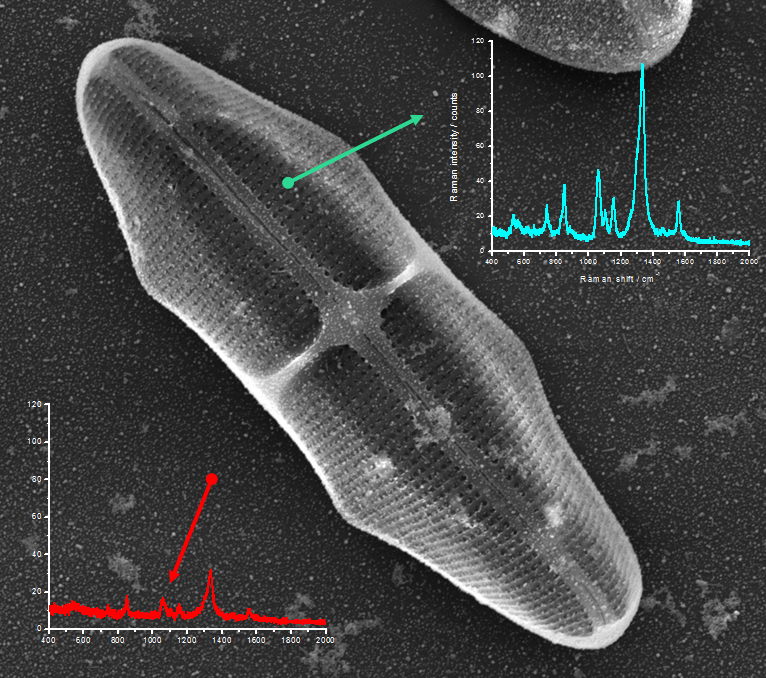New low-cost, ultra-sensitive biosensor uses diatoms and nanoparticles
September 12, 2014

Ultra-sensitive immunoassay biosensor using diatom biosilica with self-assembled plasmonic nanoparticles (credit: Jing Yang et al./Journal of Biophotonics)
Oregon State University researchers combined diatoms (a type of single-celled photosynthetic algae) with self-assembled plasmonic nanoparticles to create a low-cost sensor capable of detecting miniscule amounts of protein or other biomarkers.
Optical biosensors are important in health care for such applications as detecting levels of blood glucose or the presence of antibodies. They are also used for chemical detection in environmental protection.
Existing biosensors often require high-cost fabrication using artificial photonic crystals to make a precisely structured device. But diatoms appear to have just the right kind of intricate structure to integrate with gold or silver nanoparticles and produce a low-cost optical biosensor.
“It’s much lower cost, about 50 cents compared to $50,” said Alan Wang, an assistant professor of electrical engineering in the OSU College of Engineering.
The researchers found that using diatoms also increases the signal by 10 times and the sensitivity by 100 times. The current sensitivity of the OSU biosensor is 1 picogram per milliliter, which is much better than optical sensors used in clinics for detecting glucose, proteins and DNA, which have a sensitivity of 1 nanogram per milliliter.
The research still needs “significant funding input” to be available commercially, Wang told KurzweilAI in an email.
The research is sponsored by the Oregon Nanoscience and Microtechnologies Institute and Marine Polymer Technologies.
Abstract of IEEE Journal of Selected Topics in Quantum Electronics paper
We present an innovative surface-enhanced Raman spectroscopy (SERS) sensor based on a biological-plasmonic hybrid nanostructure by self-assembling silver (Ag) nanoparticles into diatom frustules. The photonic-crystal-like diatom frustules provide a spatially confined electric field with enhanced intensity that can form hybrid photonic-plasmonic modes through the optical coupling with Ag nanoparticles. The experimental results demonstrate 4-6× and 9-12× improvement of sensitivities to detect the Raman dye for resonance and nonresonance SERS sensing, respectively. Such low-cost and high-sensitivity SERS sensors have significant potentials for label-free biosensing.
Abstract of Optics Express paper
Diatoms are single-celled algaes that make photonic-crystal-like silica shells or frustules with hierarchical micro- & nano-scale features consisting of two-dimensional periodic pores. This article reports the use of diatom frustules as an integration platform to enhance localized surface plasmon resonances of self-assembled silver nanoparticles (NPs) on the surface of diatom frustules. Theoretical and experimental results show enhanced localized surface plasmons due to the coupling with the guided-mode resonances of the frustules. We observed 2 × stronger optical extinction and over 4 × higher sensitivity of surface-enhanced Raman scattering of Rhodmine 6G from the NPs-on-diatom than the NPs-on-glass structure.